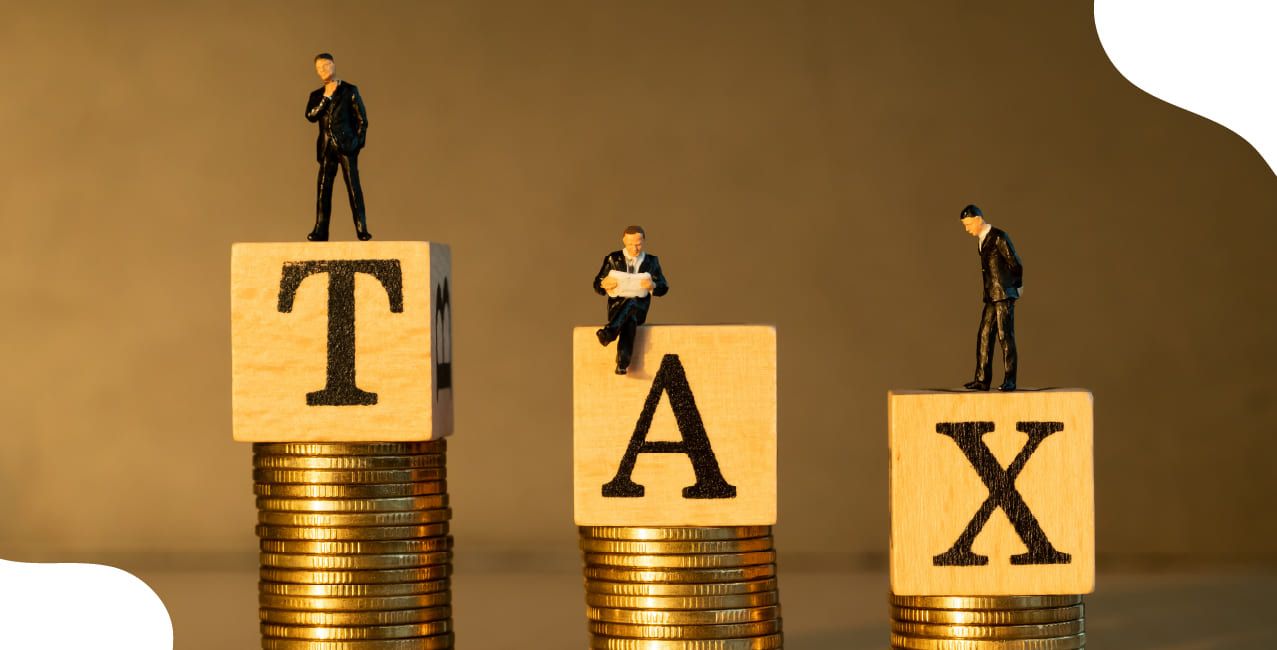
Author
LoansJagat Team
Read Time
6 Min
22 Sep 2025
Section 90 of Income Tax Act – Double Taxation Avoidance Explained
Key Takeaways
- Section 90A is a benefit provided to an individual earning income in both a foreign country and a resident country.
- Section 90A protects you from paying tax on the same income twice. This section ensures that you do not pay tax again in your resident country for the income already taxed in another country.
- To claim this relief, you need to submit Form 67 along with your ITR. Section 90A provides relief on income like salary, dividends, interest, royalties, or business profits.
Section 90 provides tax relief for individuals and firms with income across two or more nations. It ensures that an individual or a business does not pay tax twice on the same income. This makes cross-border financial activities simpler and fairer.
Mohini is a software consultant. She earns ₹12,00,000 from a company in Mauritius and ₹8,00,000 in India. If both companies tax her fully without relief, then she might pay tax on the ₹12,00,000 twice.
Section 90 helps her avoid this double taxation by giving her a way to claim credit or relief. In this blog, we will explore Section 90 of the Income Tax Act, including its benefits, conditions for availing of the relief, procedure, and more.
What Is Section 90 Of The Income Tax Act?
Section 90 deals with tax treaties between two countries, commonly known as Double Taxation Avoidance Agreements (DTAAs). Such agreements ensure income is not taxed twice across nations. It allows taxpayers to claim tax relief in the country of residence.
Section 90 applies to individuals, companies, firms, and other entities earning income abroad. Section 90 helps avoid double taxation on income like salary, dividends, interest, royalties, or business profits. Section 90 works through a tax credit or exemption method, depending on the agreement.
Bonus Tip: India has entered into Double Taxation Avoidance Agreements with over 94 countries to ensure individuals do not pay tax twice on the same income. Major countries include the UK, the USA, Singapore, Portugal, Hong Kong, Germany, France, Canada, Australia, and many more.
Benefits Of Section 90
Section 90 offers various advantages to you if you are earning income abroad. The following table highlights the key benefits of Section 90:
From the table mentioned above, you can see that Section 90 reduces tax burdens, supports global business operations and professional opportunities.
How Does Section 90 Provide Relief?
Section 90 provides relief through two main methods:
1. Exemption Method
The income taxed abroad is completely exempt in the resident country.
For example, Rashmi earns ₹5,50,000 in Singapore and ₹3,50,000 in India. Singapore taxes ₹5,50,000 at 10%, i.e., ₹55,000. Using this approach, India exempts ₹5,50,000 from tax. This reduces her total tax burden.
2. Tax Credit Method
The tax paid in the foreign country is credited against the tax payable in the resident country.
For example, Ishita earns ₹6,00,000 in Hong Kong and she pays ₹60,000 (10%) tax there. In India, she pays ₹90,000 as tax on that income (15%). Using the tax credit method, she sets off ₹60,000 and pays just ₹30,000 in India.
Conditions For Availing Relief Under Section 90
To claim relief under Section 90, taxpayers must meet specific conditions. These conditions ensure that only genuine cases of double taxation are covered and that proper compliance is followed.
The above-mentioned conditions ensure that you can claim tax relief without facing disputes or disallowances later.
Procedure To Claim Relief Under Section 90
If you want to claim relief under Section 90, then you need to follow the steps below:
- Identify applicable DTAA: Check if your country has a DTAA with the foreign country where income is earned.
- Determine the type of income: Salary, business income, dividends, interest, royalties, etc.
- Calculate tax payable abroad: Compute tax paid in the foreign country.
- File Form 67: Submit it to the Income Tax Department along with the ITR.
- Claim credit or exemption: Apply for tax relief as per the DTAA provisions.
If you want to successfully claim relief under Section 90, then you need to submit certain documents on time.
If you submit these documents correctly, then you can prevent unnecessary delays or rejections.
To benefit from Section 90, you need to maintain proper compliance and meet deadlines. You need to follow a few important compliance checks to ensure their claim under Section 90 is accepted without issues. The following table provides a compliance checklist for Section 90:
The above-mentioned checklist acts as a simple guide to help taxpayers avoid mistakes and maximise the benefits of Section 90.
Common Mistakes To Avoid Under Section 90
You might lose the benefits of Section 90 due to simple mistakes. The table below highlights common errors and how to avoid them:
If you avoid the mistakes mentioned in the above table, then you can avoid errors and claim Section 90 benefits smoothly without complications.
Final Thoughts
Section 90 plays an important role in protecting taxpayers from paying tax twice on the same income. India’s DTAA agreements with many nations ensure that taxpayers can work or invest overseas without facing tax twice on the same income.
If you want to claim this relief, then you need to file your ITR correctly, submit Form 67 on time, and keep records of foreign income and tax paid. If you follow all the rules, then you can reduce your tax burden effectively.
FAQs
1. How much income is tax free in India in 2025?
Individuals earning up to ₹12 lakh pay no tax, and for salaried employees, the ₹75,000 standard deduction raises it to ₹12.75 lakh.
2. What is a belated return?
A belated return is an income tax return filed after the due date.
3. What is Form 10F for income tax?
Form 10F is a declaration used by non-residents to claim DTAA benefits in India.
4. What are the circumstances of filing a belated and revised return?
A belated return is filed after the due date, while a revised return corrects errors in the original ITR within the allowed timeline.
5. What do you mean by deemed dividend?
A deemed dividend is a loan or payment by a company to certain shareholders treated as a dividend for tax purposes.
6. Which deduction is available under section 80C?
Section 80C allows deductions up to ₹1,50,000 for expenses and investments like LIC premiums, PPF, and ELSS.
7. Who is responsible for the assessment of income tax?
The Assessing Officer is responsible for the assessment of income tax.
Other Related Pages | |||
About the Author

LoansJagat Team
‘Simplify Finance for Everyone.’ This is the common goal of our team, as we try to explain any topic with relatable examples. From personal to business finance, managing EMIs to becoming debt-free, we do extensive research on each and every parameter, so you don’t have to. Scroll up and have a look at what 15+ years of experience in the BFSI sector looks like.

Quick Apply Loan
Subscribe Now
Related Blog Post

LoansJagat Team • 22 Sep 2025
_of_Income_Tax_Act.jpg)
LoansJagat Team • 22 Sep 2025

LoansJagat Team • 22 Sep 2025